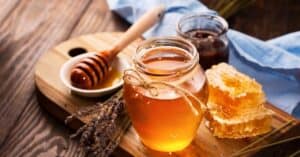Many states in the U.S. elect an official state plant or animal. These official mascots include state trees, flowers, fish, birds, mammals, and even insects. Mississippi is no exception, as the state has both a state butterfly and a state insect. Keep reading to discover the official Mississippi state insect.
What is the State Insect of Mississippi?

The official Mississippi state insect is the European honey bee. Mississippi is not alone in this selection, as several other states have also chosen the European honey bee as their state insect. In fact, the European honey bee ranks as the most popular official state insect.
Also known as the western honey bee, the European honey bee (Apis mellifera) belongs to the bee family Apidae. It is a member of the genus Apis and is the most popular honey bee alive today. Its genus name Apis derives from the Latin word for “bee.” Meanwhile, its specific name mellifera means “honey-bearing” or “honey-carrying.”
European honey bees were one of the first domesticated insects. They remain the most popular honey-producing bees kept by beekeepers around the world. You can now find European honey bees all around the world and on every continent except Antarctica.
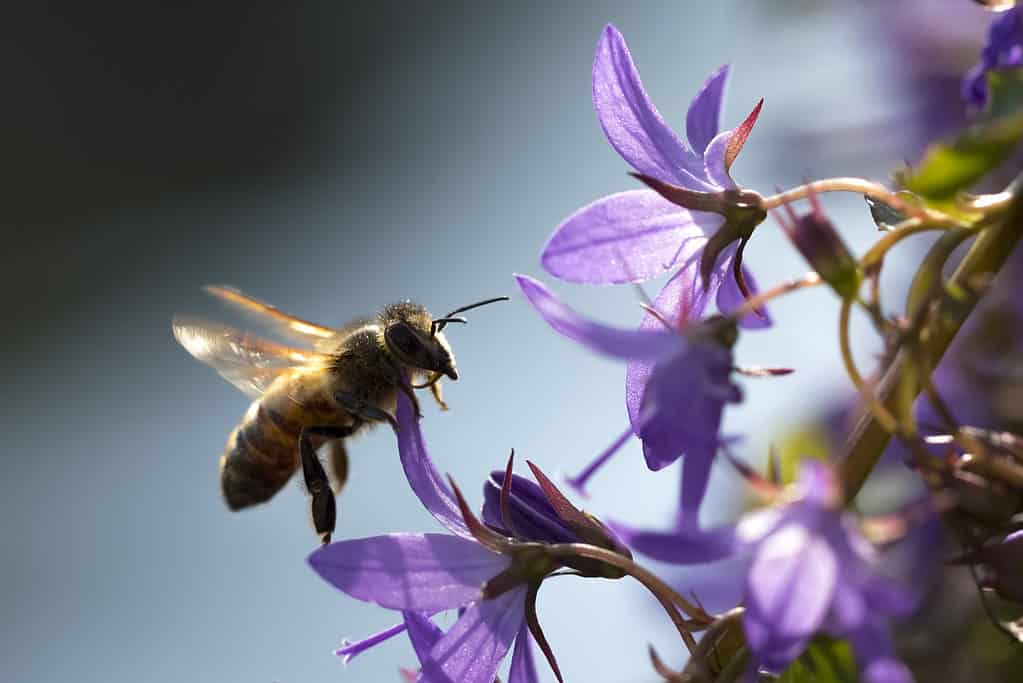
The official Mississippi state insect is the European honey bee (
Apis mellifera).
©SanderMeertinsPhotography/Shutterstock.com
How the European Honey Bee Came to Be the Official Mississippi State Insect
The Mississippi Legislature designated the European honey bee the official state insect in 1980. It chose the European honey bee based on the recommendation of the Mississippi Entomological Association and the Mississippi Beekeepers Association. These two organizations chose the European honey bee over the fire ant and the boll weevil.
You can find honey produced by European honey bees all over Mississippi. The U.S. Department of National Agricultural Statistics Service, Mississippi supports anywhere from 15,000 to 20,000 European honey bee colonies. Given their widespread distribution, it’s no wonder that the Mississippi chose the European honey bee as the official state insect.
European Honey Bee Life Cycle and Appearance
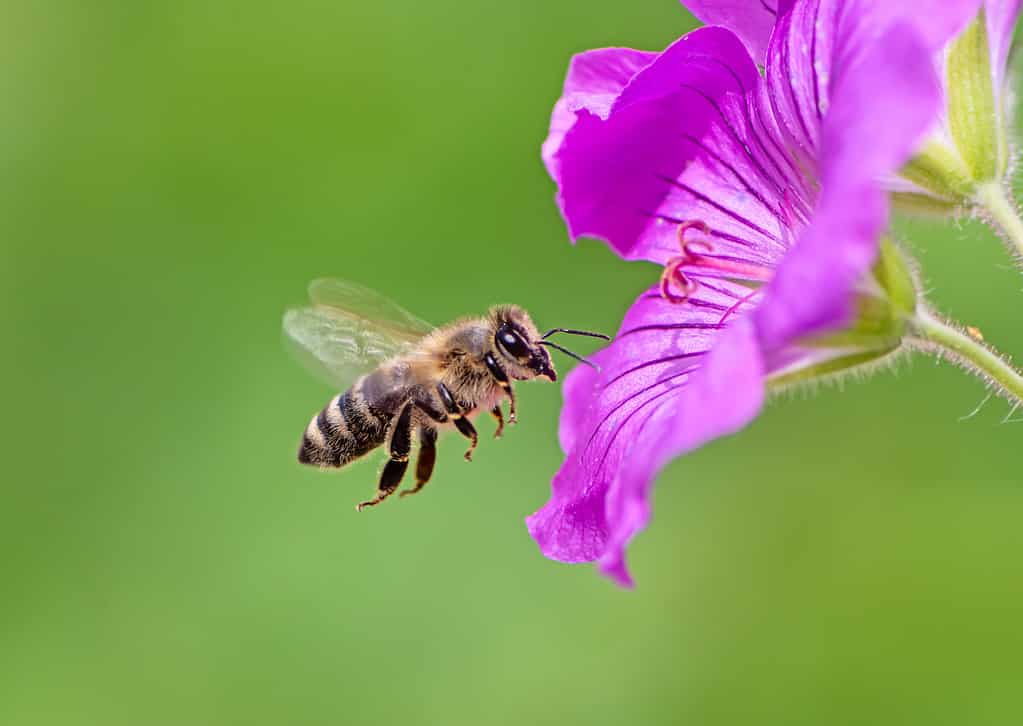
This bee’s body is covered in small, bristle-like hairs and features characteristic yellow and brown stripes.
©iStock.com/manfredxy
European honey bees vary in appearance depending on their role and life cycle stage. They begin life as eggs measuring 1 to 1.5 millimeters long. These eggs hatch after around three days, and the larvae emerge. Larvae, or grubs, appear as small, white worms. Over the next 15 days, the larvae grow in size until they develop into pupae. From there, the pupae develop either into workers, drones, or future queens. Queens typically emerge after 16 days, while workers take around 21 days, and drones take 24 days. When new queens emerge, they fight among themselves until a single female remains standing. The old queen and her workers normally vacate the hive before the new queen arrives. The new queen then sets about starting her own colony of workers and drones. A single queen can live for up to 8 years, although most only live 3 to 5 years.
Adult European honey bees measure between 0.37 and 0.75 inches long. The queen measures the longest, and workers average around half the size of the queen. Meanwhile, drones measure around 1.5 times the size of workers and feature a noticeably rounder abdomen. The body consists of three sections, including the head, thorax, and abdomen. All three parts are covered in small, bristle-like hairs, and the abdomen features characteristic yellow and brown stripes. Like all insects, European honey bees possess 6 legs. Each leg ends in a sharp claw that allows the bees to grab and hold onto flowers. The head sports a pair of sensitive antennae and two large, compound eyes. Only female European honey bees (workers and queens) possess stingers.
Diet: What Do European Honey Bees Eat?
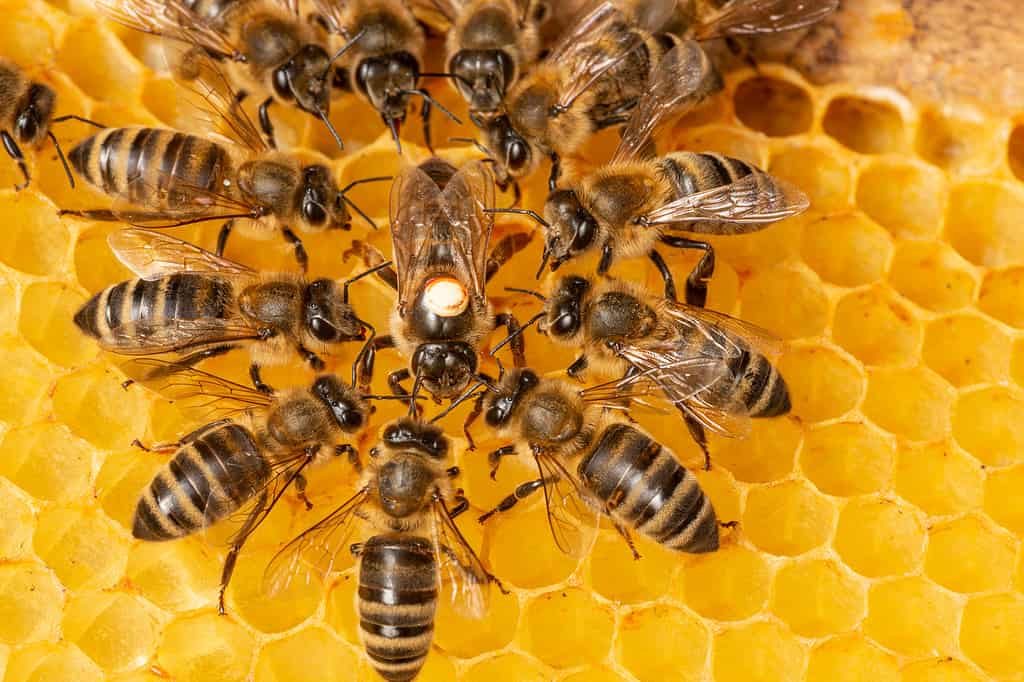
European honey bees eat different foods depending on their position in the colony.
©Kuttelvaserova Stuchelova/Shutterstock.com
European honey bees consume several sorts of food, including honey, plant nectar, royal jelly, and pollen. They produce honey from plant nectar that they collect from flowering plants. Meanwhile, bee bread is a special food consisting of around 75% pollen combined with honey, nectar, and saliva. European honey bee saliva contains enzymes that break transform into yeast and bacteria and break down the protein in pollen to make it more digestible. The nutritional makeup of bee bread varies depending on the type of pollen that the bees collect. This variety helps to ensure that European honey bees get all the nutrients they need.
That said, European honey bees eat different foods depending on their position in the colony. During the first few days of life, larvae eat exclusively royal jelly. This highly-potent food source is produced by nurse bees and consists mostly of carbohydrates and sugar. While larvae stop eating royal jelly once they mature, the queen bee is the only member of the colony that continues to eat royal jelly well into adulthood. To get all the nutrients they need to make the royal jelly, nurse bees primarily feed on bee bread. Meanwhile, worker and drone bees feed on nectar, honey, and pollen.
Importance of European Honey Bees
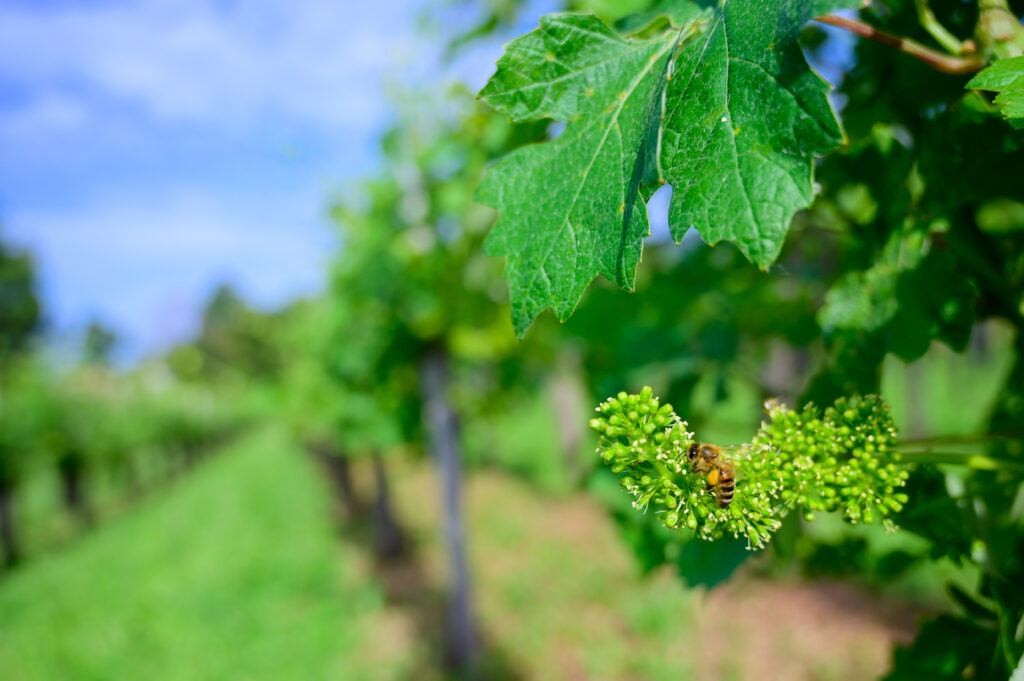
Honey bees pollinate nearly $15 billion worth of crops every year.
©Samo Trebizan/Shutterstock.com
European honey bees serve a vital role in the pollination of plants. As a matter of fact, honey bees helped to produce nearly 30% of the entire global food supply. They pollinate nearly $15 billion worth of crops every year. An entire industry exists that involves shipping hives to states so as to allow the workers to pollinate crops such as melons, squash, nuts, berries, and many more.
In addition to serving as pollinators, European honey bees also produce valuable commercial products in the form of honey, beeswax, and royal jelly. A single hive can produce anywhere from 30 to 60 pounds of honey in a year. Under the right circumstances, this output can increase to up to 100 pounds per year. The value of the global honey market totals over $8 billion per year. While less popular than honey, royal jelly is also frequently eaten thanks to its purported health properties. Meanwhile, beeswax is eaten as food and used to make commercial goods, including candles, food preservers, and skincare products.
The photo featured at the top of this post is © Daniel Prudek/Shutterstock.com
Thank you for reading! Have some feedback for us? Contact the AZ Animals editorial team.




